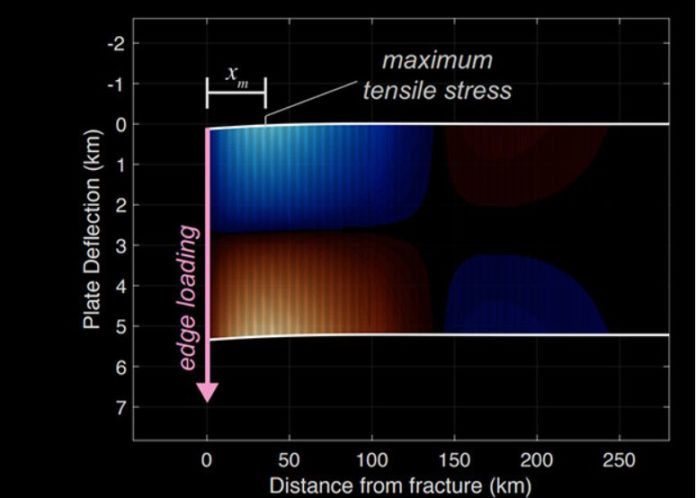Scientists have put forward a theory that describes the occurrence of parallel cracks in the area of the south pole of Enceladus, known as tiger stripes. According to the new idea, initially formed a fault in the thinnest ice, and then the water breaking through it leads to deformations and new cracks along with the existing one. Cascade repetition of the process causes the appearance of tiger bands.
Enceladus is a small satellite of Saturn, belonging to the class of ice moons since its surface is frozen water. This group includes many large satellites of the giant planets that are large enough to obtain a round shape, as well as some other bodies. The most famous example is the satellite of Jupiter Europa.
Enceladus stands out among ice satellites with several features. The “calling card” of this body is a huge stream of water that beats under pressure from the ocean liquid water located under the ice crust. In these emissions, scientists found several types of impurities, including organic compounds. This makes Enceladus one of the most promising bodies in terms of finding extraterrestrial life, as its bowels are heated by tidal friction.
Another feature is the system of long parallel faults at the south pole, along which the ridges stretch. There are four main cracks, in common they are called tiger stripes, but they also have their own names: Alexandria, Cairo, Baghdad and Damascus – according to the cities mentioned in the collection of fairy tales “One Thousand and One Nights”. They stretch for about 130 kilometres, while between neighbouring everywhere around 35 kilometres. These are very large formations for a satellite with a diameter of only 500 kilometres. Scientists have already put forward ideas about the reasons for the formation of game bands, but they could not explain all the observed features.
The work of American astronomers led by Douglas Hemingway of the Carnegie Institute describes a new theory of the appearance of stripes. According to it, such bands should be formed in the polar regions, and the appearance of the first sharply reduces the likelihood of such structures appearing at the opposite pole. Then, discharges of water from the fault lead to the accumulation of ice deformations and subsequent splitting.
The data from the Cassini probe, which examined the Saturn system, show that the ice on Enceladus is indeed the thinnest in the region of the poles. However, the satellite’s gradual cooling leads to the freezing of part of the water, an increase in volume, and the accumulation of mechanical stresses in the ice crust. The authors of the new work believe that this was the reason for the appearance of the first fault, which was the Baghdad crack, passing directly through the southern geographic pole.
The appearance of the fault leads to the rise of water under pressure from the ocean to the surface, which evaporates in low-pressure conditions. At the same time, part of it, as well as most of the solid impurities contained in it fall back on Enceladus, accumulating in the form of ridges. As a result, there are forces that put downwards on the edge of the cracks, which lead to the deformation of the ice layer, reaching a maximum at some distance from the fault.
Scientists cite calculations that the proposed model may explain the observed distance between the cracks of 35 kilometres. It is impossible to make a more accurate prediction at the moment, as neither the thickness of the ice nor its mechanical properties, in this case, are known with sufficient accuracy. Also, the proposed model could potentially explain why such structures exist only on Enceladus, but not on Europe. Astronomers claim that this is due to the small mass of Jupiter’s satellite: weak gravity allows faults to pass through the entire ice layer and persist for a long time, and on larger bodies will cause ice to disappear, which will prevent the necessary voltage from heating up.
